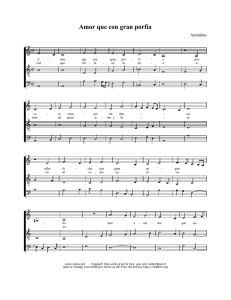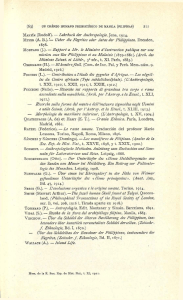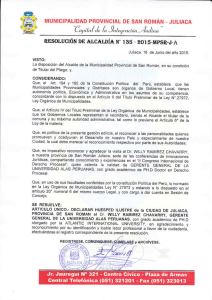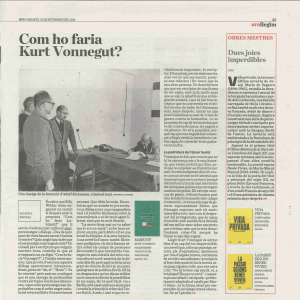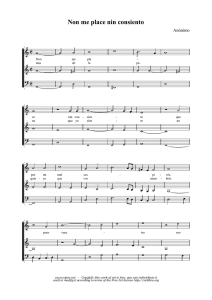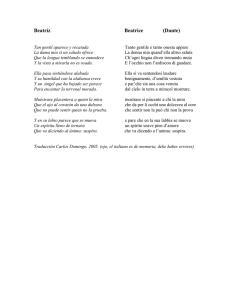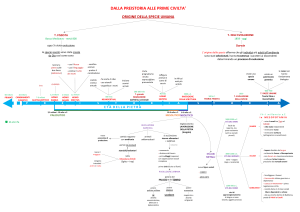VP753/1 - 3B Scientific
Anuncio
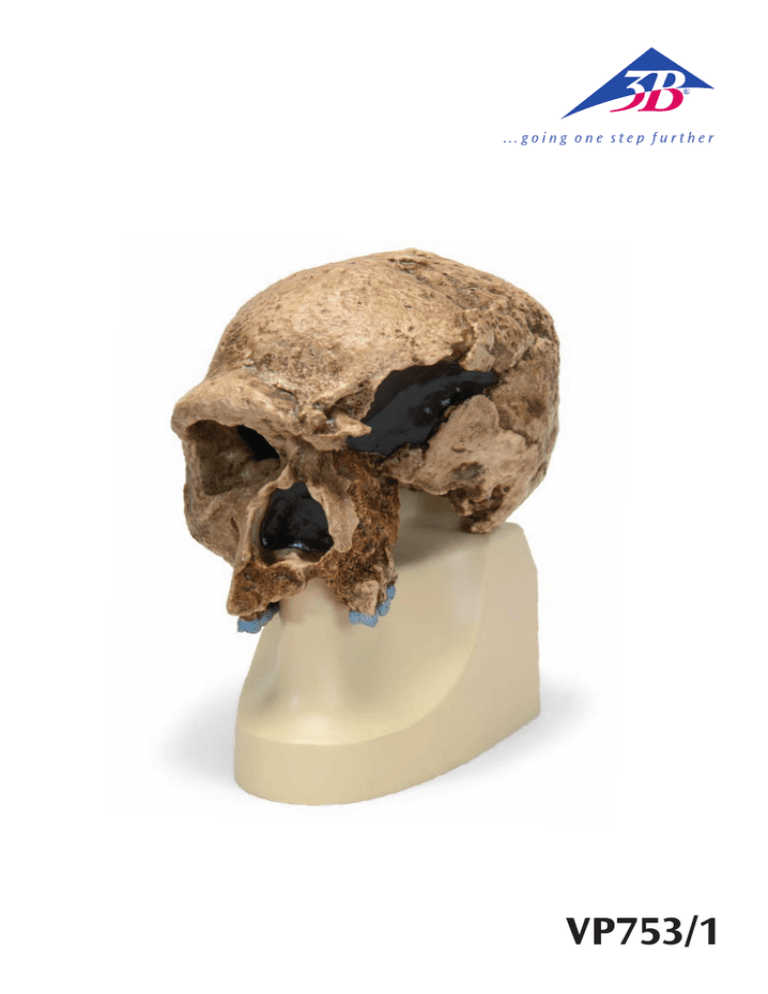
VP753/1 Steinheim English • Homo steinheimensis (Berkhemer 1936) • Homo sapiens steinheimensis (Campbell 1964) • Group classification: Pre-Neanderthal (Ante-Neanderthal) possibly archaic Homo sapiens • Reconstruction based on Berkhemer Skull without lower jaw. The model was developed from a cast of the replica from the collection of the Johann Wolfgang Goethe University of Frankfurt am Main, Institute of Anthropology and Human Genetics for Biologists. The skull was discovered in 1933 in a gravel pit near Steinheim on the Murr in Southern Germany. Bones of archaic elephants, Merck‘s rhinoceros and a wide-shovelled giant stag were found in the same layers. On the basis of the attendant fauna it was possible to estimate the origin to be approximately in the upper Middle Pleistrocene. A later, more accurate determination fixed the data at approximately 250 000 years. Hence the Steinheim skull can be allocated to the last part of the Middle Riss Interglacial period. It is consequently much older than the classic Neanderthal man and even the Pre-Neanderthal man. On the other hand it is considerably younger than the Sinanthropus (Homo erectus pekinensis) or even the Heidelberg man (Homo erctus heidelbergensis). In the original skull which belonged to an individual of about 25 to 30 years, there are parts missing, for example parts of the upper jaw with the front teeth and the two zygomatic arches. In addition to this the left side of the face showed evidence of serious injuries. The right side of the skull seems uninjured, but may have been shifted somewhat to the left by the pressure of the soil. This made some correction necessary for accurate skull determination and its reconstruction. ® Compared to the classic Neanderthal man, and also the Sinanthropus, the skull is very narrow. It is additionally characterized by the fossa canina at the upper jaw below the eye sockets and the deep depression at the root of the nose. There is only a slight projection in the face (slight proscopiny) and the bones of the skull are distinctly thinner than those of the classic Neanderthal man. As is the case in the Sinanthropus, the widest part of the cranium is not between the ears but located much higher. With the overall higher skull, the marked indentation of the occiput is not evident. Seen from the rear the head seems nearly square in shape. The mastoid bone at the temporal fossa, however, is extremely small. Length and width of the skull are 185 mm and 132 mm, respectively, with the cranial capacity being between 1,100 and 1,200 cm3. This suggests a relatively long, rather narrow and altogether delicate skull. Weinert (1936) believes it to be that of a female, as the �������������������� “������������������� overall diagnosis” seems ������������������������������� to indicate. The form of the forehead, of the eye sockets and the region above the eyes, the region of the glabella and the formation of the ridges above the eyes however, seem to contradict this. For a long time, the Steinheim Skull was the cornerstone of the so-called “presapiens theory”, which postulates that anatomically modern humans and Neanderthals developed synchronously in Europe. Although even today the Steinheim Skull raises many questions due to its bewildering mosaic of modern and archaic characteristics, the presapiens theory can hardly be upheld in this form any longer. More likely, the skull can be assigned as a female representative of the group of Homo heidelbergensis finds or the early Neanderthals. English Steinheim Weinert (1936) gives a detailed description of the skull, accompanied by many sketches, good photographs and very accurate measurements; even though his diagnosis and conclusions regarding the phylogenetic position of the skull do not agree with modern knowledge. It is therefore recommended that Adam (1988) be consulted. Author: Dr. sc. Arthur ������������������������������������������������� Windelband, Humboldt University of Berlin Revised in 2004 by Mr. Stefan Flohr, member of staff at the Johann Wolfgang Goethe University of Frankfurt am Main ® Steinheim Name Deutsch • Homo steinheimensis (Berkhemer 1936) • Homo sapiens steinheimensis (Campbell 1964) • Gruppe: Vor-Neandertaler (Ante-Neandertaler) evtl. archaischer Homo sapiens • Rekonstruktion nach Berkhemer Schädel ohne Unterkiefer Das Modell wurde nach einem Abguss der Nachbildung aus der Sammlung der Johann Wolfgang GoetheUniversität Frankfurt am Main, Institut der Anthropologie und Humangenetik für Biologen, entwickelt. Der Schädel wurde 1933 in einer Kiesgrube in der Nähe von Steinheim an der Murr (Süddeutschland) entdeckt. In den gleichen Schichten fanden sich Knochen des Altelefanten, des Merckschen Nashorns und eines breitschaufligen Riesenhirsches, so daß auf Grund dieser Begleitfauna eine ungefähre Altersdatierung (oberes Mittelpleistozän) möglich war. Die genauere Bestimmung wurde inzwischen ebenfalls durchgeführt und ergab ein Alter von etwa 250.000 Jahren. Der Schädel von Steinheim gehört demnach in den letzten Teil des Mindel-Riß-Interglazials. Er ist also wesentlich älter als der klassische Neandertaler und selbst als der Praeneandertaler, andererseits aber bedeutend jünger als der Sinanthropus (Homo erectus pekinensis) oder gar der Heidelberger (Homo erectus heidelbergensis). Am Originalschädel, der von einem etwa 25 bis 35 Jahre alten Individuum stammt, fehlen z.B. Teile des Oberkiefers mit den vorderen Zähnen, außerdem beide Jochbögen, und die linke Gesichtsseite weist starke Beschädigungen auf. Die rechte Schädelseite macht einen unversehrten Eindruck, ist aber vermutlich durch Erddruck etwas nach links verschoben, so daß sich für genaue Schädelbestimmungen und für die Rekonstruktionen einige Korrekturen als notwendig erwiesen. ® Hinsichtlich der äußeren Form finden sich Anklänge an den Schädel des rezenten Menschen. Das betrifft besonders den Verlauf der Sagittalkurve im hinteren Schädelbereich, aber auch die Transversalkurve mit dem „fünfeckigen“ Verlauf. Das Gebiß ist bereits stark reduziert, und die Oberkieferzähne sind denen des rezenten Menschen völlig gleich gestaltet. Die dritten oberen Molaren („Weisheitszähne“) stehen den beiden anderen an Größe deutlich nach. Man kann also auf einen relativ kleinen Unterkiefer schließen, der in seinen Ausdehnungen bei weitem nicht an die der klassischen Neandertaler heranreichen würde. Der im Gegensatz zu dem des klassischen Neandertalers aber auch des Sinanthropus sehr schmale Schädel ist außerdem durch die Wangen-furche (Fossa canina) auf dem Oberkieferknochen unter den Augenhöhlen und durch eine tiefe Einsenkung der Nasenwurzel gekennzeichnet. Das Gesicht tritt nicht sehr stark hervor (geringe Proscopinie), und die Schädelknochen sind bei weitem nicht so dick wie die bei den klassischen Neandertalern. Die größte Breite des Hirnschädels liegt nicht mehr im Bereich der Ohrgegend, wie beim Sinanthropus, sondern wesentlich höher. Bei der insgesamt größeren Höhe des Schädels fehlt auch die scharfe Abknickung des Hinterhauptes, das von hinten betrachtet fast eine quadratische Form aufweist. Der Warzenfortsatz (Processus mastoideus) am Schläfenbein ist allerdings außerordentlich klein. Die Schädellänge wird mit 185 mm, die Schädelbreite mit 132 mm angegeben, das Hirnschädelvolumen mit 1100 bis 1200 cm3. Es handelt sich also um einen relativ langen, aber sehr schmalen und insgesamt zierlichen Schädel. Auf Grund der „Gesamtdiagnose“ hält Weinert (1936) den Schädel für weiblich. Dem widersprechen aber der Verlauf der Stirn, die Form der Augenhöhle und der Überaugengegend, die Glabellarpartie und die Ausbildung des Überaugenwulstes. Der Steinheimer Schädel stand lange Zeit Pate für die sog. „Präsapiens-Theorie“, nach der sich der anatomisch moderne Mensch und der Neandertaler zeitgleich in Europa entwickelt haben sollten. Obwohl der Steinheimer Schädel auch heute noch durch sein verwirrendes Mosaik an modernen und archaischen Merkmalen Rätsel aufgibt, kann die „Präsapiens-Theorie“ in dieser Form kaum noch aufrecht erhalten werden. Der Schädel dürfte eher als weiblicher Vertreter in den Kreis der Homo heidelbergensis-Funde oder der frühen Neandertaler zu stellen sein. Deutsch Steinheim Name Eine ausführliche Beschreibung des Schädels mit zahlreichen Skizzen, guten Fotos und sehr genauen Maßangaben gibt Weinert (1936). Allerdings entsprechen seine Diagnose und seine Schlußfolgerungen hinsichtlich der phylogenetischen Stellung des Schädels nicht den modernen Erkenntnissen. Es sei deshalb auf Adam (1988) verwiesen. Verfasser: Dr. sc. Arthur Windelband, Humboldt-Universität zu Berlin 2004 überarbeitet durch Herrn Stefan Flohr, Mitarbeiter der Johann Wolfgang Goethe-Universität Frankfurt am Main ® Steinheim Name Español • Homo steinheimensis (Berkhemer 1936) • Homo sapiens steinheimensis (Campbell 1964) • Grupo: Pre-Neandertalensis (Ante-Neandertaler) posible Homo sapiens arcaico • Reconstrucción según Berkhemer Cráneo sin mandíbula inferior El modelo se ha desarrollado a partir de un molde proveniente de la ��������������������������� colección del Instituto de Antropologia y Genetica Humana para Biologos, Johann Wolfgang Goethe-Universität, Frankfurt am Main. El cráneo fue hallado en 1933 en un depósito de grava en las proximidades de Steinheim sobre el Murr (Sur de Alemania). En los mismos estratos se encontraron también huesos del antiguo elefante, del rinoceronte Merksche y de un ciervo de ancha paleta, de forma que, en base a esta fauna concomitante, fue posible fijar una antigüedad aproximada (Pleistoceno Medio Superior). Entre tanto este dato ha podido ser fijado con más precisión y ha resultado una antigüedad de aproximadamente 250.000 años. El cráneo de Steinheim pertenece en consecuencia al último período del Interglaciar Mindel-Riss. Es por lo tanto notablemente más antiguo que el clásico Hombre de Neandertal e incluso que el Preneandertalensis, pero, por otra parte, notablemente más reciente que el Sinantropus (Homo erectus pekinensis) o incluso que el Hombre de Heidelberg (Homo erectus heildelbergensis). En el cráneo original, que pertenece a un individuo de 25 a 35 años, faltan por ejemplo partes de la mandíbula superior con los dientes de adelante y además ambos pómulos, y el lado izquierdo de la cara apunta a fuertes deterioros en forma de heridas por golpe. La cara derecha del cráneo da una impresión sana, pero está desplazada un poco hacia la izquierda, debido posiblemente a la presión de la tierra, de forma que para determinaciones exactas del cráneo y para las reconstrucciones se evidenció la necesidad de algunas correcciones. ® Respecto a la forma exterior se hallan asonancias con el cráneo del hombre moderno. Esto afecta sobre todo al transcurso de la curva sagital en la zona posterior del cráneo y también a la curva transversal, con el curso de “������������������������������������������������������������������������������������������� �������������������������������������������������������������������������������������������� cinco esquinas“. La dentadura está fuertemente reducida y los dientes de la mandíbula superior son del todo semejantes a los del hombre moderno. Los molares terceros superiores (muelas del juicio) son notablemente inferiores en tamaño a los otros dos. Se puede por lo tanto concluir que se trata de una mandíbula inferior relativamente pequeña, la cual, en sus dilataciones, no llegaría a alcanzar ni con mucho a la del Hombre de Neardental clásico. El cráneo muy estrecho, en contraposición al del Hombre de Neandertal clásico y también al del Sinantropus, está caracterizado además por los hoyuelos de las mejillas (Fossa canina) sobre los huesos de la mandíbula superior, bajo el nivel de los ojos, y por un profundo hundimiento de la raíz de la nariz. La cara no sobresale muy fuertemente (Proscopinie diminuta), y los huesos del cráneo no son con mucho tan gruesos como los del Hombre de Neandertal clásico. La mayor anchura del cráneo no está situada tanto en la región de la zona del oído, como en el Sinantropus, sino notablemente más alta. En la mayor altura en general del cráneo se echa de menos también el agudo acodamiento de la región occipital, la cual, observada desde atrás, presenta una forma casi cuadrada. La prolongación en forma de verruga (Processus mastoideus) en el hueso temporal es, sin embargo, extraordinariamente pequeña. Se da para la longitud del cráneo 185 mm y para la anchura del cráneo 132 mm; el volumen cerebral del cráneo está comprendido entre 1.100 y 1.200 cm3. Se trata por lo tanto de un cráneo relativamente largo, pero muy estrecho y en general fino. En base a la ���������������������������������������������������������� “��������������������������������������������������������� diagnosis total“ Weinert (1936) considera el cráneo como perteneciente a un ser femenino. Esta afirmación está, sin embargo, en contradicción con la forma de la frente, la forma de la cuenca de los ojos y la zona sobre los ojos, la expresión del entrecejo y la formación de los abultamientos sobre los ojos. Steinheim Name Español El cráneo de Steinheimer viene siendo desde hace tiempo el padrino de la denominada “teoría del presapiens”, según la cual el hombre anatómicamente moderno y el hombre de Neandertal deben haberse desarrollado coetáneamente en Europa. Aunque el cráneo de Steinheimer incluso hoy mismo supone, por su enredado mosaico, un acertijo debido a sus características modernas y arcaicas, la “teoría del pre-sapiens” no puede sustentarse en esta forma. El cráneo estaría mas bien identificado como el representante femenino en el ámbito de los hallazgos del Homo heidelbergensis o de los primeros neandertales. Weinert (1936) presenta una descripción exhaustiva del cráneo, con numerosos dibujos, buenas fotografías y medidas muy precisas. Sin embargo su diagnosis y sus conclusiones con relación a la posición filogenética del cráneo no se corresponden con los conocimientos actuales. Se hace referencia a este respecto a Adam (1988). Autor: Dr. sc. Arthur Windelband, Unidad Humboldt de Berlin 2004 reelaborado por el Sr. Stefan Flohr, colaborador de la Johann Wolfgang Goethe-����������������������� Universität, Frankfurt am Main ® Steinheim Français • Homo steinheimensis (Berkhemer 1936) • Homo sapiens steinheimensis (Campbell 1964) • Groupe : Pré-Néandertalien (Ante-Néandertalien) évent. Homo sapiens archaïque • Reconstruction selon Berkhemer Crâne sans maxillaire inférieur Le modèle a été développé d'après un moulage de la reproduction originale de la collection de l'université Johann Wolfgang Goethe à Francfort-sur-le-Main, institut d'anthropologie et de génétique humaine pour biologistes. Le crâne fut découvert en 1933, dans une gravière à proximité de Steinheim an der Murr (dans le sud de l‘Allemagne). Dans les mêmes couches sédimentaires du gisement se trouvaient les os d’un éléphant préhistorique, d’un rhinocéros de Merck ainsi qu‘un cerf à empaumures larges, de sorte qu‘en raison de cette faune d‘accompagnement, il fut possible de procéder à une datation approximative (Pléistocène moyen supérieur). Entre temps, une datation plus précise a également été effectuée et a permis de supposer l‘âge des ossements à 250 000 ans environ. Par conséquent, le crâne de Steinheim fait partie de la dernière partie de la période glaciaire de Mindel-Riss. Il est donc nettement plus âgé que le crâne du Néandertalien classique et même plus vieux que celui du prénéandertalien; toutefois, il est considérablement plus jeune que le crâne du Sinanthropus (Homo erectus pekinensis) ou même que le crâne de Heidelberg (Homo erectus heidelbergensis). Sur le crâne original qui provient d‘un individu âgé entre 25 et 35 ans, des parties du maxillaire supérieur avec la dentition avant manquent, de même que les deux arcades zygomatiques, de plus, le côté gauche de la face présente d‘importants dommages. Le côté droit du crâne donne l‘impression d‘être intact mais a toutefois probablement été quelque peu déplacé vers la gauche du fait de la poussée des terres, de sorte que quelques corrections s‘avérèrent nécessaires pour assurer des déterminations crâniennes plus précises et pour les travaux de reconstitution. ® La forme extérieure, quant à elle, évoque le crâne de l‘homme récent. Ceci s‘applique particulièrement à l‘allure de la courbe sagittale dans la région crânienne arrière mais également à la courbe transversale à l‘allure ������������������������������������������������������������������������������������������������ “����������������������������������������������������������������������������������������������� pentagonale“. La dentition est déjà nettement réduite et les dents du maxillaire supérieur ont exactement la même disposition que celles de l‘homme récent. Les troisièmes molaires supérieures (������� “������ dents de sagesse“) ont une taille nettement plus petite que les deux autres. On peut par conséquent supposer un maxillaire inférieur relativement petit dont les extensions ne pourraient de loin pas atteindre celles des Néandertaliens classiques. Le crâne extrêmement étroit, comparé à celui du Néandertalien classique mais aussi à celui du Sinanthropus, est en outre caractérisé par la Fossa canina sur l‘os maxillaire supérieur, sous les cavités orbitaires ainsi que par une profonde creusure de la racine du nez. La face ne forme pas d‘avancée extrêmement prononcée (légère proscopinie) et les os crânienne sont nettement pas aussi épais que ceux du Néandertalien classique. La largeur la plus importante de la boîte crânienne ne se situe plus dans la région de l‘oreille - comme chez le Sinanthropus - mais nettement plus haut. En présence d‘une hauteur crânienne au total plus élevée, il y a également absence de la nette pliure occipitale qui, contemplée de par l‘arrière, a une forme quasiment carrée. Toutefois, l‘apophyse du mastoïde (Processus mastoideus) sur l‘os temporal est extrêmement petite. La longueur du crâne mesurée est de 185 mm, la largeur du crâne est de 132 mm et la capacité de la boîte crânienne se situe entre 1100 et 1200 cm3. Par conséquent, il s‘agit là d‘un crâne relativement long mais extrêmement étroit et, au total, gracile. En raison du ������������������������������������������������������ “����������������������������������������������������� diagnostic global“, Weinert (1936) est d‘avis que le crâne est celui d‘une femme. Cependant, l‘allure du front, la forme de la cavité orbitaire et de la région des arcades sourcilières, la partie glabellaire (saillie située entre les deux crêtes sourcilières) ainsi que la forme du bourrelet de l‘arcade sourcilière (Tori supraorbitales) contredisent cette supposition. Steinheim Français Le crâne de Steinheim a longtemps inspiré ladite "théorie du Presapiens" selon laquelle l'homme d'anatomie moderne et l'homme de Neandertal devraient s'être développés durant la même période en Europe. Bien que le crâne de Steinheim soit aujourd'hui encore une énigme de par sa mosaïque troublante de caractéristiques modernes et archaïques, la "théorie du Presapiens" ne peut plus être maintenue sous cette forme. Le crâne devrait plutôt être attribué à un représentant féminin faisant partie des découvertes de l'Homo heidelbergensis ou de l'homme de Neandertal précoce. Une description exhaustive du crâne avec de nombreux schémas, de bonnes photos et des indications dimensionnelles d‘une extrême précision sont fournies par Weinert (1936). Toutefois, son diagnostic et ses conclusions ne correspondent pas aux connaissances modernes eu égard à la classification phylogénétique du crâne. Par conséquent, il convient de se reporter au travail d‘Adam (1988). Auteur : Dr. sc. Arthur Windelband, Université Humboldt de Berlin Remanié en 2004 par Monsieur Stefan Flohr, collaborateur de l'Université Johann Wolfgang Goethe à Francfortsur-le-Main ® Steinheim Português • Homo steinheimensis (Berkhemer 1936) • Homo sapiens steinheimensis (Campbell 1964) • Classificação do grupo: Pré-Neanderthal (Ante-Neanderthal) possivelmente Homo sapiens arcaico • Reconstrução baseada no Crânio de Berkhemer, crânio sem a mandíbula inferior O modelo foi desenvolvido a partir de um molde de uma reprodução da coleção da Universidade Johann ������� Wolfgang Goethe em Frankfurt am Main, Instituto de Antropologia e Genética Humana, para biólogos. O crânio foi descoberto em 1933 em uma mina de cascalho próxima à Steinheim no Murr no Sul da Alemanha. Ossos do elefante antigo, rinoceronte de Merck e um veado macho gigante foram encontrados nas mesmas camadas. Baseado na fauna observada foi possível estimar sua origem de ser de aproximadamente da primeira metade do período plistóceno. Mais tarde, uma determinação mais precisa fixou a data em aproximadamente 250.000 anos. Assim sendo, o Crânio de Steinheim pode ser alocado como da segunda metade do período inter-glacial. Consequentemente ele é muito mais antigo do que o Homem de Neanderthal clássico e até mesmo do Homem de Pré-Neanderthal. Por outro lado, ele é consideravelmente mais novo do que o Sinanthropus (Homo Pekinensis) ou até mesmo que o Homem de Heidelberg (Homo Heidelbergensis). No crânio original, que pertencia a um indivíduo adulto de cerca de 25 a 30 anos de idade, faltam, por exemplo, partes da mandíbula superior com os dentes da frente e os dois arcos zigomáticos. Além disso, o lado esquerdo da face mostra grandes evidencias de ferimentos. O lado direito do crânio parece não conter ferimentos, mas foi possivelmente deslocado para esquerda devido à pressão do solo. Isso fez com que algumas correções fossem necessárias para uma precisa determinação do crânio e sua respectiva reconstrução. ® O formato externo sugere uma similaridade ao homem moderno, especificamente na curva sagital da região craniana posterior e também na curva transversa ������������������������������������������������ “����������������������������������������������� pentagonal“. A dentição já é notavelmente reduzida, com os dentes na mandíbula superior correspondentes ao do homem moderno. Os terceiros molares superiores (dentes do ciso) são evidentemente menores do que os outros dois. Isso sugere uma mandíbula inferior relativamente menor, a qual seria de longe excedida em tamanho pelo homem de Neanderthal clássico. Comparado com o Homem de Neanderthal clássico e também ao Sinanthropus, o crânio é bastante estreito. Além do mais, ele é caracterizado pela fossa canina na mandíbula superior abaixo das órbitas oculares e pela profunda depressão na raiz do nariz. Há somente uma leve projeção na face (leve proscopinia) e os ossos do crânio são distintamente mais finos do que os do Homem de Neanderthal clássico. Assim como no caso do Sinanthropus, a parte mais extensa do crânio não está localizada entre as orelhas, mas sim muito mais acima. Com um crânio no geral muito mais alto, a indentação marcada do occiput deixa de ser evidente. Visto por trás, a cabeça parece quase quadrada em seu formato. O osso mastóide na fossa temporal, no entanto, é extremamente pequeno. Comprimento e largura do crânio são 185 mm e 132 mm respectivamente, com a capacidade craniana entre 1.100 e 1.200 cm3. Trata-se de um relativamente longo, no entanto estreito e ao todo elegante exemplar. Weinert (1936) acredita que seja de uma mulher, assim como o “��������������������������������������� ���������������������������������������� diagnóstico geral“ o indica. O formato da testa, das órbitas oculares e da região acima dos olhos, a região da glabela e a formação das elevações sobre os olhos no entanto, parecem contradizer tal afirmação. O crânio de Steinheim teve durante muito tempo o papel de padrinho da chamada “teoria do pré-sapiens”, segundo a qual o homem anatomicamente moderno e o homem de Neandertal devem ter se desenvolvido simultaneamente na Europa. Apesar do crânio de Steinheim ser ainda hoje cheio de mistérios por causa do seu confuso mosaico de características modernas e arcaicas, a “teoria do pré-sapiens” praticamente Steinheim Português não pode ser sustentada dessa forma. O crânio deveria ser visto mais como um representante feminino no âmbito dos achados ligados ao Homo heidelbergensis ou aos achados ligados ao Neandertal mais antigos. Weinert (1936) dá uma descrição detalhada deste crânio, acompanhado de diversos esboços, excelentes fotografias e medidas extremamente acuradas; apesar do fato que seu diagnóstico e suas conclusões sobre a posição filogênica do crânio não vá de encontro com o conhecimento moderno. Portanto recomenda-se que Adam (1988) seja consultado. Autor: Dr. sc. Arthur Windelband, Universidade Humboldt de Berlim Edição revisada em 2004 por Stefan Flohr, funcionário da Universidade Johann Wolfgang Goethe em Frankfurt am Main ® Steinheim Italiano • Homo steinheimensis (Berkhemer 1936) • Homo sapiens steinheimensis (Campbell 1964) • Gruppo: Pre-neandertaliani (ante-neandertaliani) evtl. Homo sapiens arcaico • Ricostruzione in base al cranio di Berkhemer senza mandibola Questo modello è il calco di una riproduzione proveniente dalla raccolta dell’università Johann Wolfgang Goethe di Francoforte sul Meno, Istituto di antropologia e genetica umana per biologi. Il cranio è stato scoperto nel 1933 in una cava di ghiaia nelle vicinanze di Steinheim an der Merz (in Germania meridionale). Negli stessi strati si sono trovate ossa di elefanti antichi, di rinoceronte di Merck e di cervo gigante a corna larghe, cosicché per via di questi reperti concomitanti è stata possibile una datazione approssimativa (pleistocene medio superiore). In seguito è stata eseguita anche una classificazione esatta che ha stabilito un’età di circa 250.000 anni. Il cranio di Steinheim appartiene quindi all’ultima parte dell’era interglaciale di Mindel-Riss; ne consegue che è molto più vecchio del neandertaliano classico e anche del preneandertaliano, ma molto più giovane del Sinanthropus (Homo erectus pekinensis) e persino dell’uomo di Heidelberg (Homo erectus heidelbergensis). Nel cranio originale, appartenente ad un individuo di circa 25 – 35 anni, mancano per esempio parti della mascella superiore con i denti anteriori, mentre le due arcate zigomatiche e il lato sinistro del viso presentano forti lesioni. Il lato destro del cranio sembra meglio conservato, anche se probabilmente la pressione della terra sovrastante ne ha determinato il lieve spostamento verso sinistra, per cui si rendono necessarie alcune correzioni al fine di arrivare ad una classificazione e ricostruzione precisa del cranio. ® Per quanto riguarda la forma esterna, si notano somiglianze con il cranio dell’uomo recente soprattutto nell’andamento della curva sagittale della regione craniale posteriore, ma anche nella curva trasversale con andamento “a cinque angoli”. La dentatura è già fortemente ridotta e i denti della mascella superiore sono completamente simili nella forma a quelli dell’uomo recente. I molari superiori (“denti del giudizio”) sono molto più piccoli degli altri due molari, il che ci porta a supporre una mandibola relativamente piccola, di ampiezza molto inferiore a quella del neandertaliano classico. Il cranio, molto stretto rispetto a quello del neandertaliano classico e anche del Sinanthropus; è inoltre caratterizzato da una fossa canina sull‘osso della mascella superiore, sotto la cavità oculare, e da un avvallamento profondo della radice nasale. Il viso non è molto sporgente (proscopinia ridotta) e le ossa del cranio non sono così spesse come nel neandertaliano classico. La larghezza massima della calotta cranica non è più nella regione delle orecchie, come nel Sinanthropus, bensì molto più in alto. Il cranio è complessivamente più alto e manca anche lo stacco netto dell’occipite, che osservato da dietro presenta una forma quasi quadrata. Il processo mastoideo dell’osso temporale tuttavia è straordinariamente piccolo. La lunghezza del cranio è di 185 mm, la larghezza di 132 mm, il volume della calotta cranica è di 1100 - 1200 cm3. Si tratta quindi di un cranio relativamente lungo, ma molto stretto e nel complesso minuto. Sulla base della “diagnosi complessiva”, Weinert (1936) ritiene che il cranio sia femminile. Questa tesi è però contraddetta dall’andamento della fronte, dalla forma della cavità oculare e della regione sopraorbitale, dalla regione gabellare e dallo sviluppo della prominenza sopraorbitale. Il cranio di Steinheim ha ispirato per molto tempo la cosiddetta „teoria del Presapiens“, secondo la quale l‘uomo anatomicamente moderno e l‘uomo di Neandertal si sono sviluppati contemporaneamente in Europa. Anche se il cranio di Steinheim pone tuttora notevoli interrogativi per via del suo sconcertante mosaico di caratteri moderni ed arcaici, la „teoria del Presapiens“ in questa forma non è più sostenibile. Il cranio va collocato quale rappresentante femminile nell’ambito dei reperti dell‘Homo heidelbergensis o del primo uomo di Neandertal. Steinheim Italiano Weinert (1936) offre una descrizione dettagliata del cranio con numerosi schizzi, buone foto e misure molto precise. Tuttavia la sua diagnosi e le sue conclusioni in base alla posizione filogenetica del cranio sono state superate dalla ricerca moderna. Per questo rimandiamo a Adam (1988). Autore: Dr. sc. Arthur ������������������������������������������������� Windelband, Università Humboldt di Berlino Revisione del 2004 a cura di Stefan Flohr, collaboratore dell’università Johann Wolfgang Goethe di Francoforte sul Meno ® シュタインハイム人 日本語 ・(OMOSTEINHEIMENSIS "ERKHEMER ・(OMOSAPIENSSTEINHEIMENSIS #AMPBELL ・分類:プレ・ネアンデルタール,古代型ホモ・サピエンス ・下顎部分を欠損した "ERKHEMER 頭蓋骨より復元 このモデルは,フランクフルト・アム・マインにあるヨハン・ヴォルフガング・ゲーテ大学 人類学・人間遺伝 学研究所が所蔵するレプリカから製作された。 シュタインハイム人の頭骨は年に,南部ドイツのシュタインハイム近くの砂利採取坑で発掘された。同一 の地層から古代の象,メルクサイ,オオツノジカの化石が発見され,これらの動物相から中期更新世の後期が シュタインハイム人の起源だと推測された。しかし後にさらに正確な測定により万年前頃と修正された。 つまり,シュタインハイム人の年代は,大氷河期のミンデル∼リス期間終期に位置づけることができる。典型 的ネアンデルタール人やプレ・ネアンデルタール人よりもかなり古いことになるが,シナントロプス(北京原 人:(OMOERECTUSPEKINENSIS) やハイデルベルク人 (ハイデルベルグ原人:(OMOERECTUSHEIDELBERGENSIS) よりはかなり新しいといえる。 オリジナルの頭骨は∼歳の個体のものと見られており,上顎骨の一部,前歯,二つの頬骨弓といった部 分が欠損していた。これに加えて,顔の左側には大きな損傷の形跡が見られた。頭蓋骨の右側には損傷はみら れないが,土圧迫によって多少左にずれてしまっていた。このため,正確な頭蓋骨のサイズ測定と復元に際し ては修正をくわえた。 形態的特徴として,典型的ネアンデルタール人やシナントロプスと比べシュタインハイム人の頭骨は非常に幅 が狭い。これは,上顎骨の眼窩下の位置にある犬歯窩と,鼻根部にある深いくぼみによって,さらに特徴付け られる。顔面の突出はわずかで,頭蓋骨は典型的なネアンデルタール人のものより明らかに薄い。脳頭蓋の最 大幅部分は外耳道の上ではなく,シナントロプス(北京原人)のようにより上方に位置し,後頭骨の凹凸は不 明瞭で,後面観は真四角に近い。また側頭窩にある乳様突起は極端に小さい。 シュタインハイム人の頭骨のサイズは , 脳頭蓋最大長 MM, 最大幅 MM で , 頭蓋容量は ∼ CMの間である。これは比較的長く狭い,全体的に見てもろい頭蓋骨であるといえる。7EINERT () は総合的に判断し,この頭骨を女性のものであるとした。しかし,前額部と眼窩,眼の上の領域,眉間部位, そして眼窩上隆起の形態は,男性である可能性も示唆している。 長い間,シュタインハイム頭骨は,解剖学上の現代人とネアンデルタール人がヨーロッパで同時に発達したと 仮定した「プレサピエンス論」の基礎であった。シュタインハイム人の頭骨は今日でも多くの疑問をなげかけ てはいるが,プレサピエンス論を支持することはもはやできないであろう。それよりもこの頭骨は,初期ネア ンデルタール人やハイデルベルグ人((OMOHEIDELBERGENSIS)の女性のものとされるかもしれない。 7EINERT()は,多くのスケッチ,質の高い写真,かなり正確な測定とともに,頭骨の詳細な記述を残 している。しかし系統学的にみて,7EINERTの見解は現代ものとは一致しない。それゆえに,!DAM() の見解を参考にすることが望ましい。 著者:!RTHUR 7INDELBAND(フンボルト大学ベルリン校) 3TEFAN &LOHR(ヨハン・ヴォルフガング・ゲーテ大学教授)によって年に改訂 The following Anthropological skulls are also available from 3B Scientific: Bei 3B Scientific erhalten Sie auch die folgenden anthropologischen Schädel: En 3B Scientific consigue también los cráneos antropológicos siguientes: A 3B Scientific, vous pouvez aussi commander les crânes anthropologiques suivants: Na 3B Scientific você também poderá obter os seguintes crâneos antropológicos: I seguenti crani antropologici sono disponibili anche presso 3B Scientific: VP750/1 Sinanthropus VP751/1 La Chapelle VP752/1 Crô- Magnon VP754/1 Broken Hill/Kabwe VP755/1 KNM-ER 406 Omo L. 7a-125 VP753/1-05/06-2 3B S C I E NT I F I C® P R O D U C T S 3B Scientific GmbH Rudorffweg 8 • 21031 Hamburg • Germany Tel.: + 49-40-73966-0 • Fax: + 49-40-73966-100 www.3bscientific.com • [email protected] © Copyright 2004 for instruction manual and design of product: 3B Scientific GmbH, Germany
